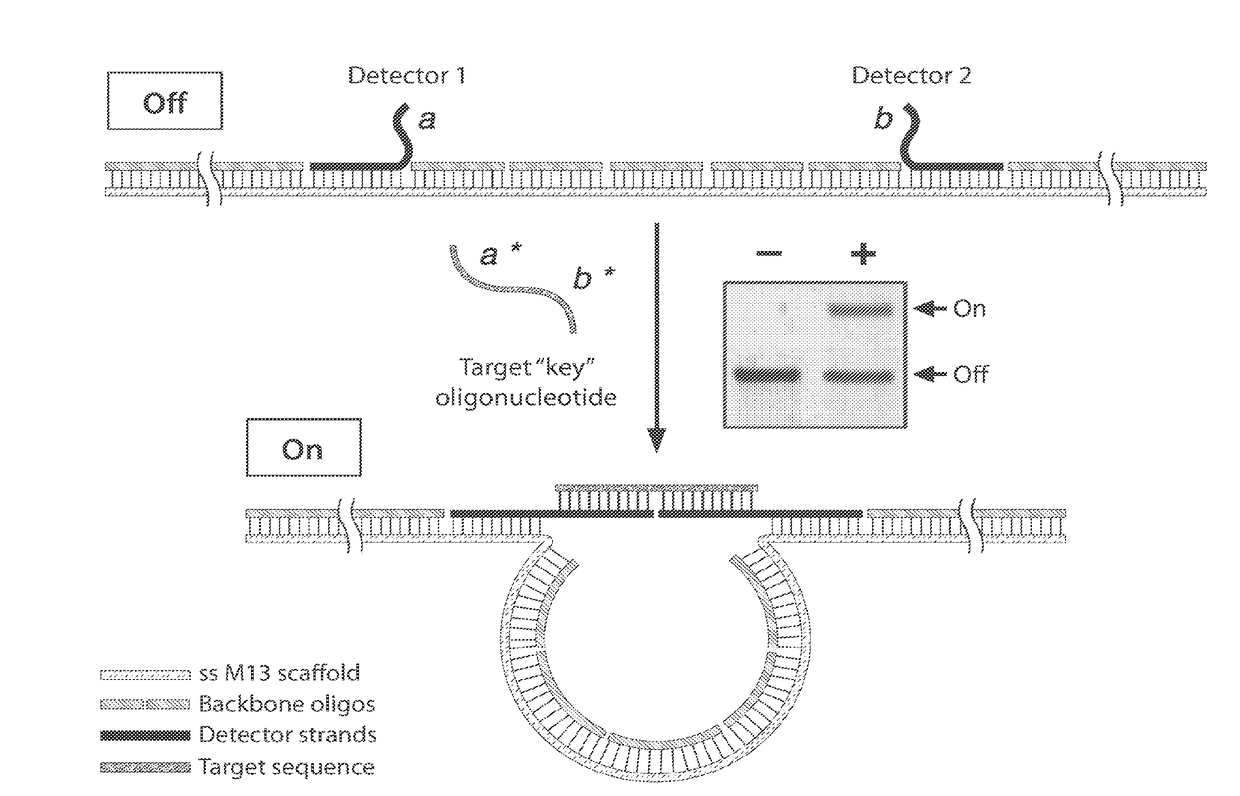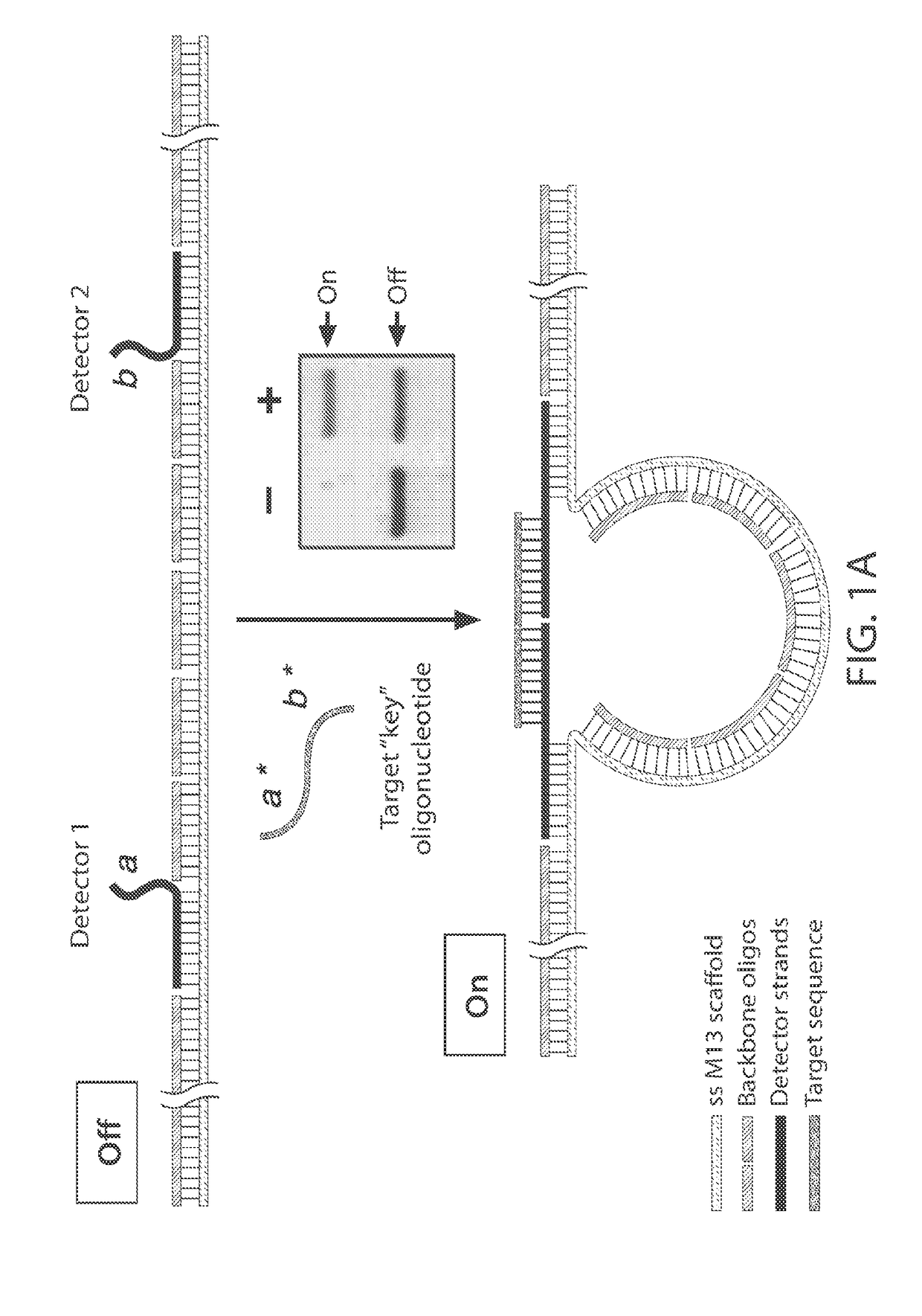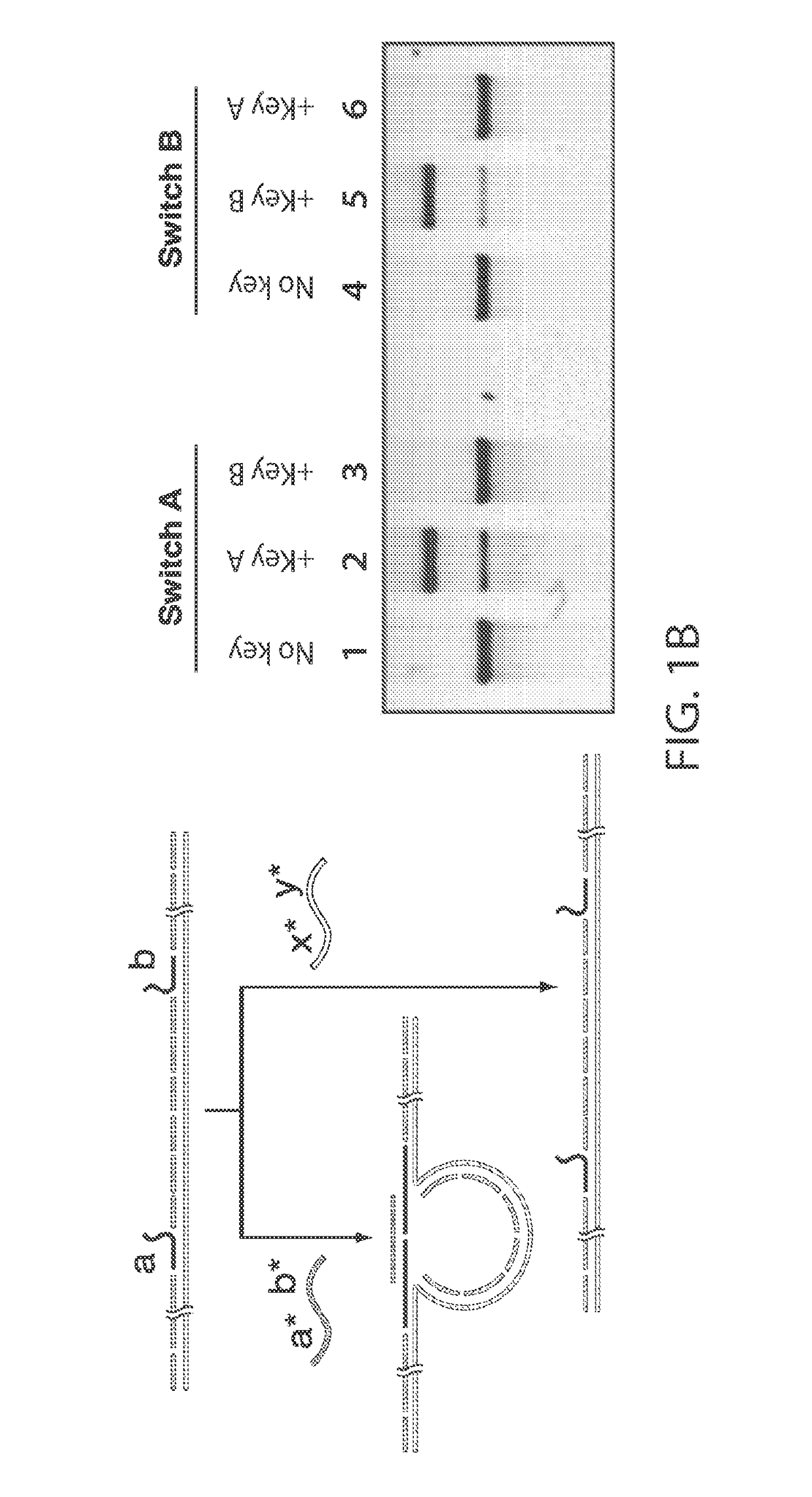Compositions and methods for analyte detection using nanoswitches
- Summary
- Abstract
- Description
- Claims
- Application Information
AI Technical Summary
Benefits of technology
Problems solved by technology
Method used
Image
Examples
example 1
kground-Free Detection of Nucleic Acid Sequences Using DNA Nanoswitches
Introduction
[0232]The ability to synthesize arbitrary DNA sequences and the remarkable specificity of Watson-Crick base pairing has led to the recent use of DNA as a nanoscale building material.[1-2] On-demand synthesis of DNA provides programmability in design, while base pairing provides the structural “glue” as well as the ability of structures to self-assemble. These features of DNA have been exploited for the construction of two-[3] and three-dimensional lattices,[4-6] as well as for complex shapes that have been facilitated by the advent of DNA origami.[7-9] Recently, active structures such as nanodevices[10] and nanomachines[11-13] have been developed as researchers focus on applying DNA nanotechnology to solve real-world problems in science. One such application is biological sensing, where thoughtfully designed nanosensors have the potential to make detection of specific biological materials simpler, che...
example 2
of a Single Mismatch
[0247]Detection of a single mismatch requires “tuning” of the detector strands to ensure that the interruption of normal base pairing produces a dramatic change in signal. The placement of the mismatch to be detected was studied in this Example.
[0248]For example, a 22-nt target sequence with complete base complementarity to the detectors inducing a conformational change which can be read out using gel electrophoresis (FIG. 9A, denoted (i)). When a single mismatch is introduced in the center of one of the detector regions, the signal drops to only about 5% (FIG. 9A, denoted (ii)). In the presence of two mismatches, there is no observable signal (FIG. 9A, denoted (iii)).
[0249]FIG. 9B provides further analysis of mismatch detection in synthetic RNA. In these experiments, the nucleic acids were members of the let-7 series of miRNA that differ by one or two nucleotides, as shown. The Figure illustrates both schematics and gel results of detection using a switch design...
example 3
/ Measurement of DNA Triplex Formation
[0253]The efficiency of target binding to detectors can be manipulated to study triple helix formation (FIG. 12). The shortest (i.e. weakest) target threshold can be modified to be a triplex binding site (target: polypurine, detectors: polypyrimidine). Under “normal” conditions, the nanoswitch does not undergo a conformational change due to the weak binding ability of the target. However, when a triplex forming oligonucleotide (polypyrimidine) is added, formation of a triplex helix in the target binding regions results in loop closure and a target binding signal. This strategy can be used to study the on- and off-rates of triplex formation and also to increase the binding efficiency of short DNA fragments to the detectors.
PUM
| Property | Measurement | Unit |
|---|---|---|
| Temperature | aaaaa | aaaaa |
| Temperature | aaaaa | aaaaa |
| Temperature | aaaaa | aaaaa |
Abstract
Description
Claims
Application Information
 Login to View More
Login to View More - R&D
- Intellectual Property
- Life Sciences
- Materials
- Tech Scout
- Unparalleled Data Quality
- Higher Quality Content
- 60% Fewer Hallucinations
Browse by: Latest US Patents, China's latest patents, Technical Efficacy Thesaurus, Application Domain, Technology Topic, Popular Technical Reports.
© 2025 PatSnap. All rights reserved.Legal|Privacy policy|Modern Slavery Act Transparency Statement|Sitemap|About US| Contact US: help@patsnap.com



